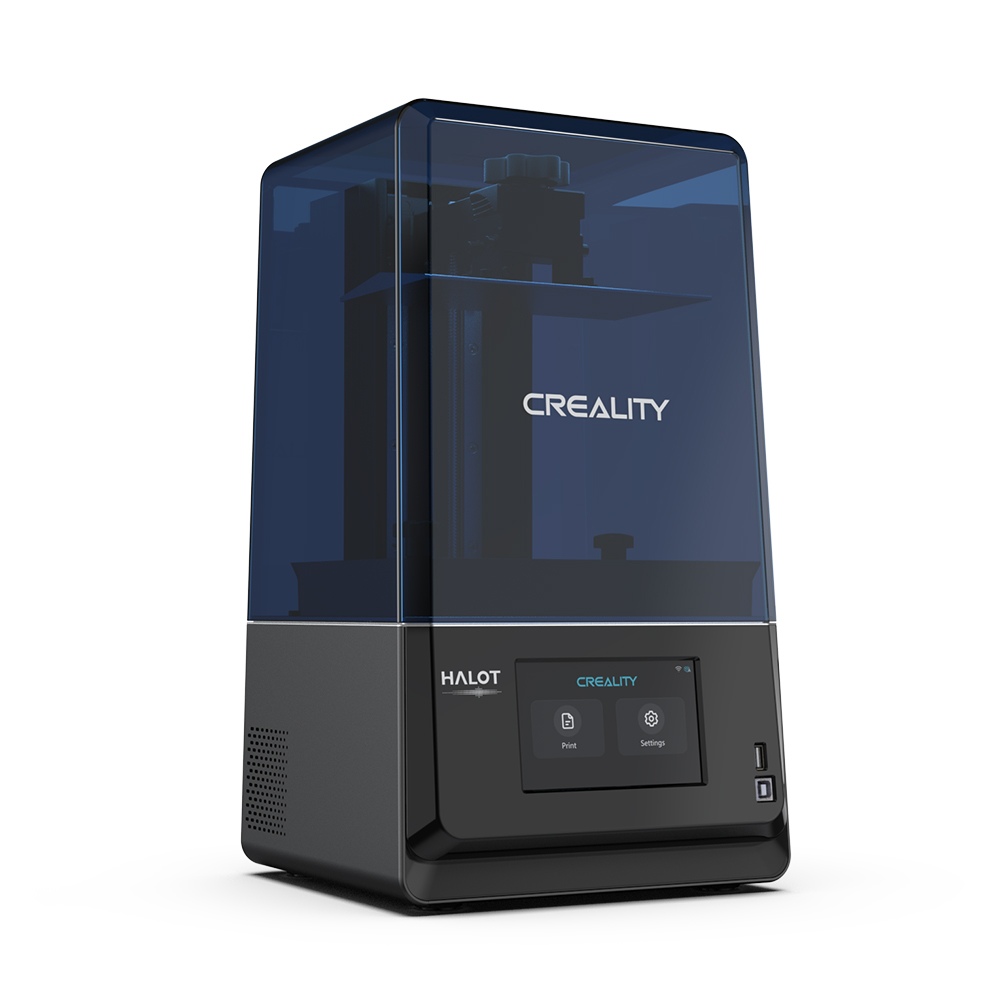Compare Halot One Plus vs K1 Max
Comparison between the best 3D printers
Choose the best 3D printer at the best price. The cheapest 3D printers are here.
Buy a 3D printer here with 3D Fila.
 |
 |
|
| Model | Halot One Plus[BUY Halot One Plus] |
K1 Max[BUY K1 Max] |
| Printing Material | Resin | Filament |
| Buy Resin for Creality 3D Halot One Plus | Buy Filament forCreality 3D K1 Max | |
| Estimated price | $399,00 | $1300,00 |
| Manufacturer | Creality 3D | Creality 3D |
| Release Year | 2022 | 2023 |
| Print Volume [mm] | 102x172x160 | 300x300x300 |
| Printer Size [mm] | 236x245x416 | 435x462x526 |
| Weight [kg] | 6,8 | 18 |
| Power Loss Recovery | NO | YES |
| Maximum Resolution [mm] | 0,1 | |
| Processor | ||
| Display | Display touchscreen 4,3'' | |
| Power Supply | ||
| Connectivity | USB / Wi-Fi | USB / Wi-Fi / Ethernet |
| Operating systems | Windows, Mac, Linux | |
| Date of registration in the system | 2022-10-11 | 2023-12-01 |
| Release date | 2022 | 2023 |
| Extra features | Crealitys Halot-One Plus printer stands out for its 4K+ resolution that delivers sharp details and consistent surfaces. It features a fast and responsive 5-inch LCD interface, as well as easy-to-use Halot Box software. It offers Wi-Fi connectivity and remote print monitoring, as well as an integrated air filtration unit, a rare feature in this price range. The Halot-One Plus is designed for the prosumer market, combining high quality with advanced features such as Wi-Fi and air filtration. During testing, it stood out for implementing these features at an affordable cost, while maintaining functionality. It features an attractive design with a UV-resistant blue cover and a robust dual rail system for the Z-axis, ensuring smooth and consistent movements. The large LCD and high resolution of the LCD mask (4320 x 2560) are other strong points, allowing for fine details and textures in prints. | The Creality K1 Max stands out as a fast Core XY 3D printer with a large build volume of 300 x 300 x 300 mm. It is fully enclosed and equipped with AI sensors to prevent print failures. This model has a smooth and flexible PEI build platform, and uses an automatic leveling system with LIDAR, as well as a filament run-out sensor. LAN, Creality Cloud and USB Flash Disk connectivity are available, as well as a 4.3-inch touchscreen interface. The K1 Max is robust, weighing in at 18 kg, and includes an AI camera and limited version of the Klipper firmware. Its motion system is solid and the printer is efficient with high-temperature filaments, but it is not silent. Assembly is 99% complete, requiring only minor adjustments before use. |
| Support for multiple colors and materials (AMS and CFS) | NO | NO |
Notes * |
||
| Cost-benefit | 8 / 10 | 7 / 10 |
| Hardware | 1.2 / 10 | 4.2 / 10 |
| Tela | . | . |
| Print volume | 3 / 10 | 4 / 10 |
| Performance | 9 / 10 | 5 / 10 |
| [BUY Halot One Plus] | [BUY K1 Max] |
Conclusion |
| In conclusion, when comparing the Creality Halot One Plus and the Creality K1 Max 3D printers, the decision ultimately hinges on user needs and budget. The Halot One Plus, while significantly more affordable, excels in delivering high-resolution prints and integrates advanced features such as remote monitoring and air filtration, making it an excellent choice for prosumers looking for quality on a budget. Its compact design and solid performance make it suitable for those who prioritize detail and finesse in their prints. On the other hand, the K1 Max offers a larger print volume and innovative features like AI sensors and an automatic leveling system. It is designed for those who require more extensive capabilities and can handle larger projects. Despite its higher cost, the robust build and efficiency with high-temperature materials cater to users focused on larger-scale or more complex printing tasks. Ultimately, both printers score equally in terms of performance, but the Halot One Plus is more cost-effective for those valuing resolution and detail, while the K1 Max serves users needing versatility and larger printing capabilities. The choice between them will depend on whether the user prioritizes affordability and detail or larger print volumes and advanced features. |

